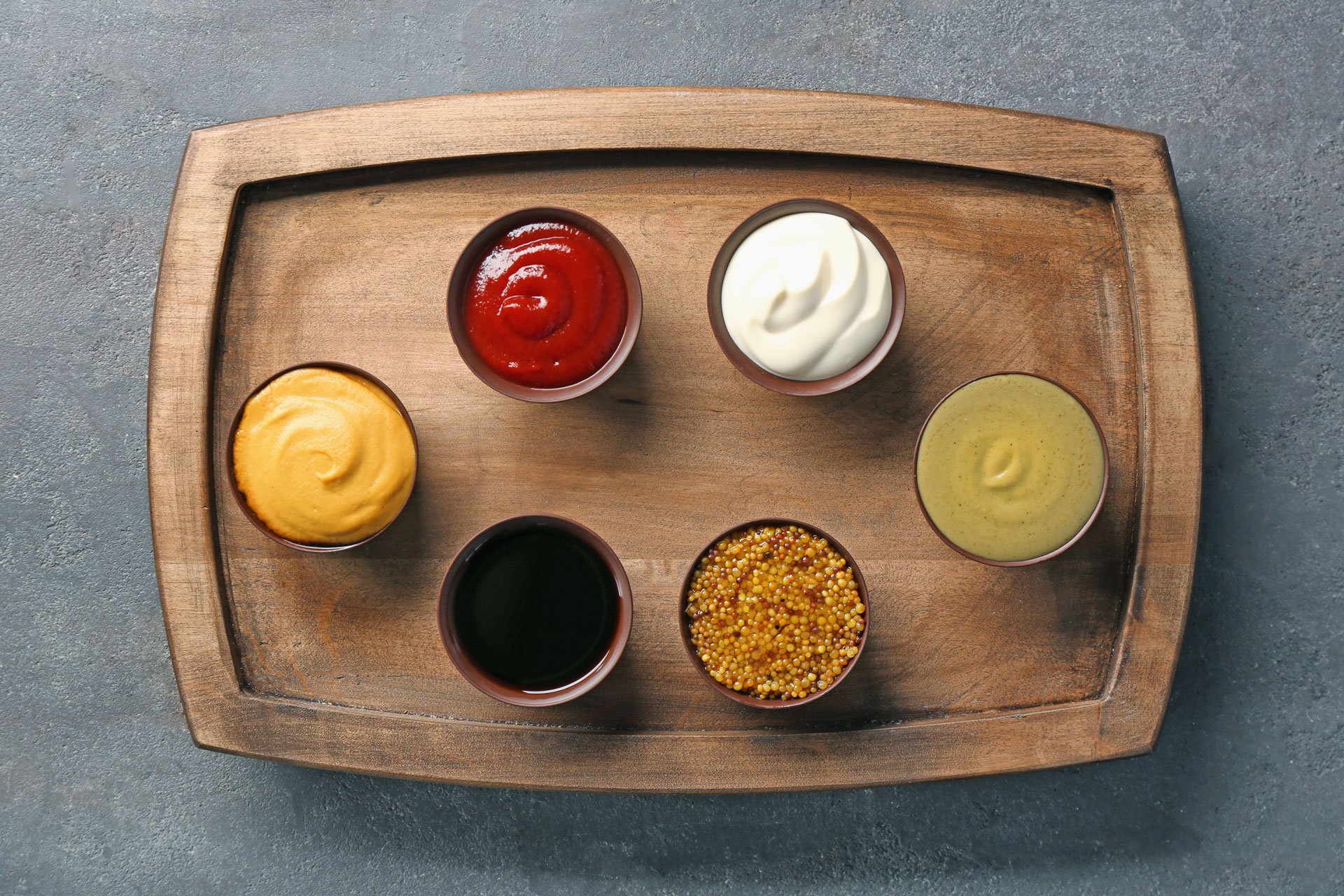Real Food Encyclopedia | Mustard
Mustard seeds are seemingly innocuous. But crack or grind these tiny powerhouses and — pow! — mustard shows its muscle. Grinding unleashes myrosin and sinigrin, two compounds that, when mixed with liquid, create a chemical reaction that gives mustard its heat. Both mustard seeds and “prepared mustards” — the condiments you’ll find in the grocery store — can be found in many cuisines.
There are several species of mustard plant, but most of the seeds we eat are either white mustard (Sinapis alba), usually the basis of American-style “yellow mustard,” or brown mustard (Brassica juncea), used for Dijon and other more pungent mustards. Black mustard (Brassica nigra) is also used — though often in combination with other seeds, as it is the spiciest of the main three.
Did you know?
- The seeds, leaves (or “greens”) and flowers of the mustard plant are all edible. More than 850,000 metric tons of mustard seeds are produced globally each year.
- France consumes more mustard than any other country, according to the New York Times. Its mustard capital is Dijon, in Burgundy; the eponymous mustard is distinct in its use of white wine or verjus in addition to — or, originally, instead of — vinegar.
- In the United States, mustard was firmly established as a condiment staple at the 1904 World’s Fair, where a new type of treat, the hot dog, was also being served. The two have been together ever since.
Sustainability of mustard
Cultivation
Mustard plants are pretty hardy and don’t require a lot of chemical inputs to thrive. In fact, mustard is a nitrogen-fixing cover crop, which means that it enriches the soil in which it is grown, increasing its fertility.
Mustard is easy to grow and will self-seed as a weed if allowed to do so. Seeds mature anywhere from 60 to 95 days from sowing. The seedpods must be harvested as soon as they begin to turn from green to tan, or they will burst and scatter.
If you are harvesting your own mustard seed, hang the ripe plants upside down in a dry, well-ventilated place. Tie paper bags around the plants to encase the pods. When fully dry, in about two weeks, the pods will burst, releasing the seeds into the bag. Carefully untie the bags from the plants and shake out onto a wooden cutting board. Separate the seeds from any plant matter by slightly tipping the board over a towel; the seeds will roll down and onto the cloth. Transfer to an airtight container and store in a cool, dark place.
Seasonality
Mustard plants like cool weather. Plant three weeks before the last frost for a spring harvest and in mid-summer for a fall harvest.
Mustard plants bolt (rapidly producing seed) in hot weather. Although this might sound like a good way to get a stash of mustard seeds going quickly, bolted seeds are inferior to those that ripen on their own time.
Eating mustard
Storing
Stored in an airtight container in a cool, dark place, mustard seeds will maintain their flavor for three to four years.
Prepared mustard has antibacterial qualities and requires no refrigeration, but keeping the condiment cold preserves its pungency. You can expect an opened jar to maintain its flavor for a month on the counter and up to a year if refrigerated.
Cooking
Whole mustard seeds are a popular spice in South Asia, where they are used as part of a tadka or in dishes like shorshe mach (mustard fish). They can also be pressed for mustard oil.
Prepared mustard is a great emulsifier, so it makes a creamy, smooth salad dressing out of vinegar and oil, ingredients that are always trying to separate. If you’re nervous about a sauce such as Hollandaise separating, add a dash of mustard to keep it intact. Prepared mustard is also great in marinades and sauces for fish, ribs and other proteins. Anything with cheese — mac and cheese, cheese soup, cheese dip — will be all better with mustard.
Preserving
Mustard seeds don’t need much help to last for a long time, though you can pickle them for a fun, flavorful pop. You can also prepare your own mustard. Once the crushed or powdered seeds are mixed with liquid, they will reach their full potency in about 10 to15 minutes. After that, without intervention, the mixture will begin to mellow rapidly, losing much of its flavor within an hour — be sure your recipe includes vinegar or another acid such as wine or citrus juice, which will halt this process. Store in the refrigerator to preserve your prepared mustard the longest.
Nutrition and health
Mustard — in seed or condiment form — is rarely eaten in high enough quantities to provide much nutritional value, though one tablespoon of ground mustard seed contains around 20 percent of the recommended daily value for selenium and 5 percent for magnesium and manganese. Mustard has also been studied for possible antimicrobial and anti-inflammatory properties.
Mustard oil is appreciated by chefs for its sinus clearing oomph. However, the oil is banned in the U.S. for kitchen use due to its high level of erucic acid, linked in animal tests to heart issues in rats. Many Asian cooks and other adopters, however, cite generations of good health by frequent consumers as evidence that fears are unfounded.
Top photo by tycoon101/Adobe Stock.

